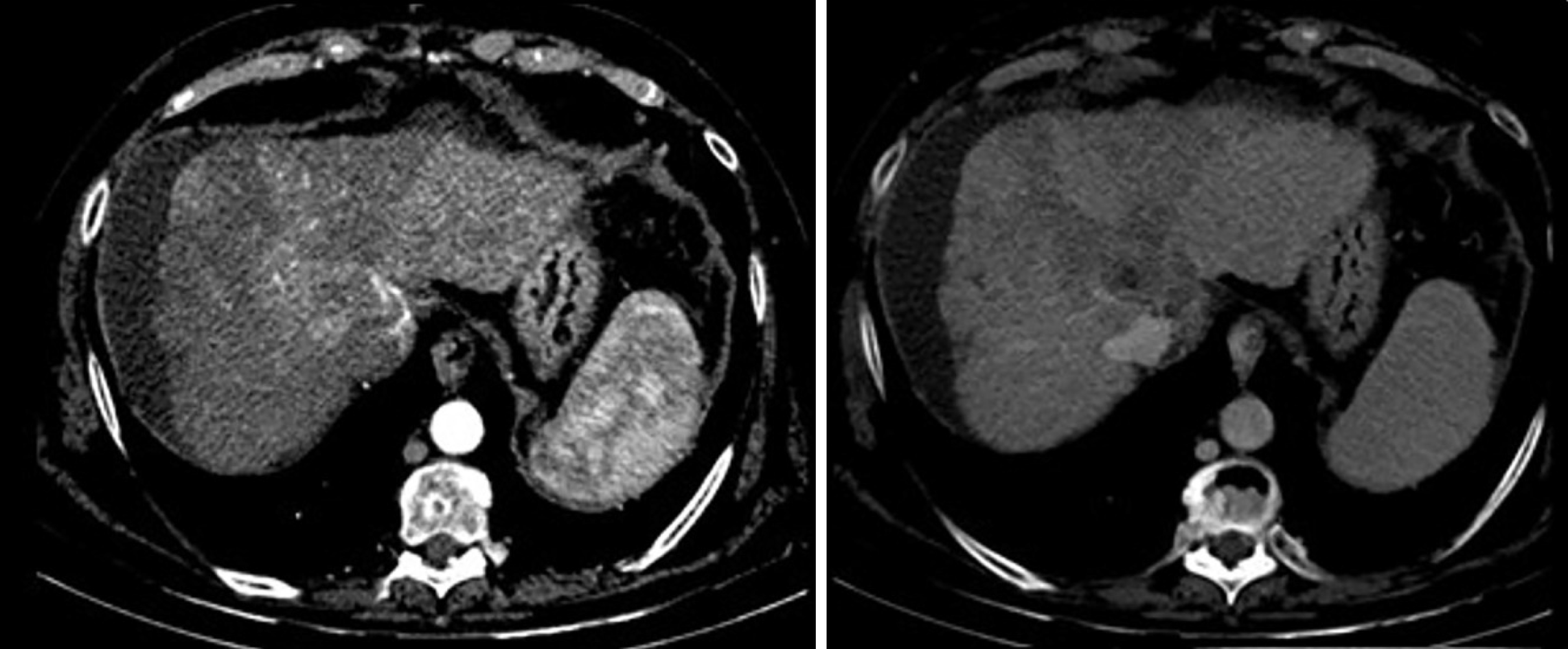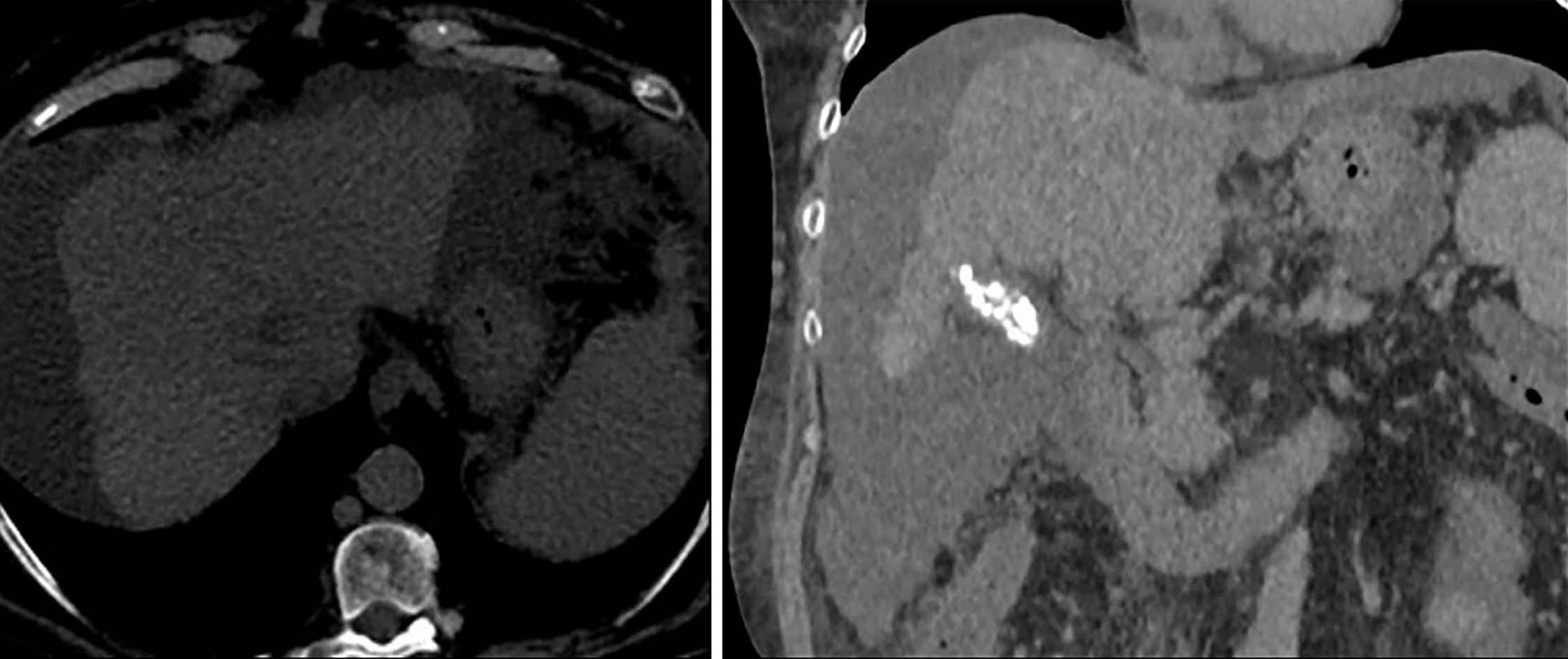Copyright
©The Author(s) 2020.
World J Hepatol. Nov 27, 2020; 12(11): 1128-1135
Published online Nov 27, 2020. doi: 10.4254/wjh.v12.i11.1128
Published online Nov 27, 2020. doi: 10.4254/wjh.v12.i11.1128
Figure 1 Magnetic resonance imaging coronal view of a polylobulated mass of 59 mm × 51 mm × 52 mm inside the right atrium (right arrow), which extends from the liver through the inferior vena cava (left arrow) to the inside of the right atrium occupying its lower-posterior wall.
These findings suggest as the first diagnostic possibility: A tumor thrombus of an advanced infiltrating hepatocellular carcinoma. Volumes and biventricular function within physiological parameters.
Figure 2 Computed tomography scan axial view shows a poorly defined liver injury with margins of 55 mm × 90 mm located in segment VIII and with extension to segment V and segment I, enhanced in arterial phase with fast venous phase washing.
Figure 3 Computed tomography scan coronal and sagittal views show a 55 mm × 90 mm mass in segment VIII with a tumor thrombus extending to the inferior vena cava (left arrow) and reaching up to right atrium (right arrow).
Left intrahepatic portal thrombosis. Portal vein thrombosis with hypercaptation of the thrombus, suggestive of infiltrative tumor.
Figure 4 Non-contrast computed tomography scan axial view showing persistence of the heterogeneous lesion in the segment VIII seen previously, not delimitable in the current study.
Hypodensity persists in the inferior vena cava and right atrium suggestive of tumor extension, with apparent small reduction, although the intravascular tumor thrombus cannot be properly determined in a non-contrast computed tomography.
- Citation: Gomez-Puerto D, Mirallas O, Vidal-González J, Vargas V. Hepatocellular carcinoma with tumor thrombus extends to the right atrium and portal vein: A case report. World J Hepatol 2020; 12(11): 1128-1135
- URL: https://www.wjgnet.com/1948-5182/full/v12/i11/1128.htm
- DOI: https://dx.doi.org/10.4254/wjh.v12.i11.1128












